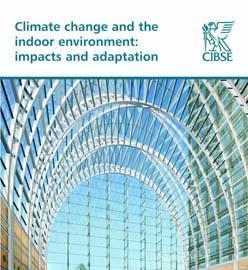Research commissioned by the DTI provides a template for how UK buildings can be adapted to cope with increasingly hot summers, one of the main effects of climate change.
CIBSE Publication
£28 (plus p&p) for CIBSE and RIBA members and £56 (plus p&p) for non-members
Sales on 020 8772 3618 or visit: www.cibse.org/publications
The research and recommendations carried out by Arup are published by CIBSE and RIBA in a new 52-page technical memorandum – Climate change and the indoor environment: impacts and adaptation.
There is compelling scientific evidence that the climate is changing, and it is probable that average temperatures will increase by several degrees over the coming century. These increases are expected to have a major impact on the internal environment of buildings. The starting point for the research is the set of UKCIP02 climate change scenarios, which provides the best currently available scientific projections for UK climate over the coming century.
Key questions addressed in the publication include: to what extent will climate change increase the occurrence of summertime thermal discomfort and ‘overheating’ in UK buildings and how effective will different approaches to comfort cooling be under the changing climate?
The research analyses these issues through the dynamic thermal computer modelling of 13 case study buildings, chosen to provide a cross-section of UK building types, including dwellings, schools and offices, and to illustrate a range of different approaches to comfort cooling provision. Performance is assessed against tests for summertime thermal performance, energy and carbon emissions.
Source
Building Sustainable Design






















No comments yet